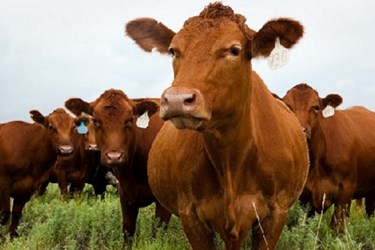Canada's VBP Raises The Bar For Beef Safety & Traceability
By Laurel Maloy, contributing writer, Food Online

Canada has one of the safest food supplies in the world thanks to programs such as the Verified Beef Production Program. Perhaps investing in similar programs could help other countries.
Canada’s Verified Beef Production Program (VBP) is a food-safety program specifically for beef producers. To put it simply, it takes all the preventive measures — Hazard Analysis Critical Control Points (HACCP), FSMA, and Hazard Analysis and Risk-Based Preventive Controls (HARPC) — and rolls them up into one, simple, record-keeping procedure for a single industry.
Shannon Argent, the VBP coordinator for Alberta, Canada, touts the newest additions to the program as being “low-cost or no-cost practical solutions.” The VBP steering committee is represented by various beef sectors, governmental agencies, processors, retailers, veterinary professionals, and scholars. The government provides incentive — in the way of funding for those ranches eligible for the Growing Forward 2 Funding program — the proof of which is enrollment and training in the VBP program. The program is designed to provide information to large corporations, such as McDonald’s, that are piloting programs aimed at food safety and sustainability. However, its far-reaching benefits for the beef industry, its inherent safe, processing practices, and for improving traceability, are glaringly obvious.
White Paper: Food Traceability — Solving The Imperative Of Compliance
The program’s current operating procedures cover shipping, manure management, animal-health management, pesticide control, water and feed, personnel training, and communication. The pilot programs for biosecurity, animal care, and environmental stewardship will be added soon, with recommendations made by the steering committee as issues are identified and addressed.
Noting that many producers are already recording the required information in notebooks, on calendars, or on sticky notes, the VBP procedure combines all of the necessary information into one clear, concise, recordkeeping system. Something as simple as an injection will be recorded with the date and time, the route of administration (subcutaneous or intramuscular), and the dosage. Additionally, if something like a broken needle occurs during inoculation, that is included, ensuring every entity taking possession of that particular animal is aware of the fact. Every animal will have a complete record of its care — from pesticides used on the pasture to medication received by way of feed or water. Widely supported by Canada’s beef industry, the consumer may also realize a future benefit — the ability to scan a Quick Response (QR) code on a meat package and find out everything about that animal.
Trace/Track Solutions For The Food Processing Industry
When looking for a similar program here in the U.S., I came across the USDA’s list of Certified Beef Programs. This list is populated by almost 100 different certification programs. These include 26 companies representing 52 different beef programs and one pork program. There are 40 Angus-based programs, six companies part of the USDA Process Verified programs, and one USDA Brand Name Specifications Program. The USDA programs are intended to provide consistency, predictability, and narrow product variability, but in no instance is the word “safety” utilized. The building blocks of each program are:
- Breed
- Quality Grade
- Yield Grade
- Maturity
- Blood Splash & DC
- Muscling
- Sex Class
- Breed & Hump Height
- Marbling Texture
The closest program to the VBP is the U.S.’s Beef Quality Assurance (BQA) program, its tagline being A Safe, Wholesome and Healthy Beef Supply. BQA is more of an educational program with producer involvement being completely voluntary. The guiding principles of BQA are that production practices affect consumer acceptance of beef and that the program will empower producers to improve the safety of beef products. The BQA’s resources include manuals, assessment booklets, instructional DVDs, and audits through 2005. The BQA’s guidelines and Code of Conduct are designed to provide some (according to its website) consistency across state programs. Touted as being a non-government program and purely voluntary, there is, however, no way to implement the established guidelines in a more proactive and productive manner.
Webinar: FSMA’s Traceability Requirements & Best Practices
The beef industry is huge. There are 729,000 beef cow operations and 915,000 cattle/calf operations. The U.S. exports 5.6 billion pounds, with one of the top five export markets being Canada. Just as FSMA will provide sweeping and much needed change to the entire food-processing industry, the beef industry is one that will greatly benefit from a one-step program. The benefits in terms of the economics of safety vs. productivity are incalculable; as will be the consumer’s perception and appreciation for the beef industry’s transparency. It’s difficult to imagine the U.S.’s beef industry being anything but a winner by being open to ideas from its neighbors to the north.
